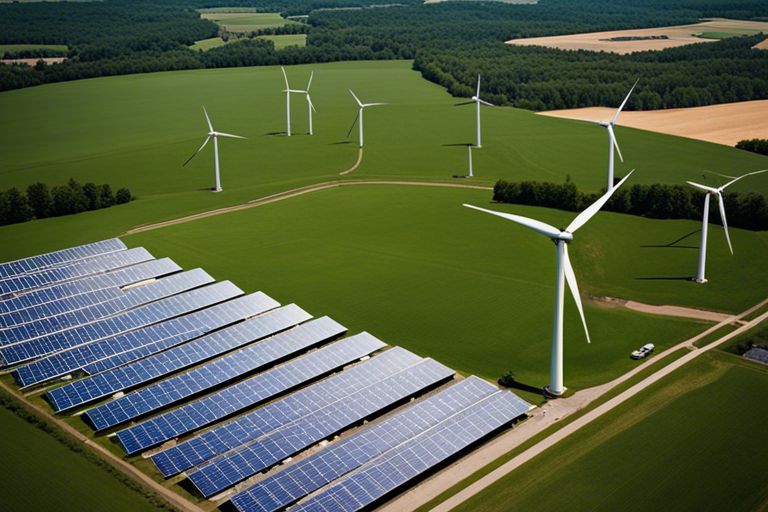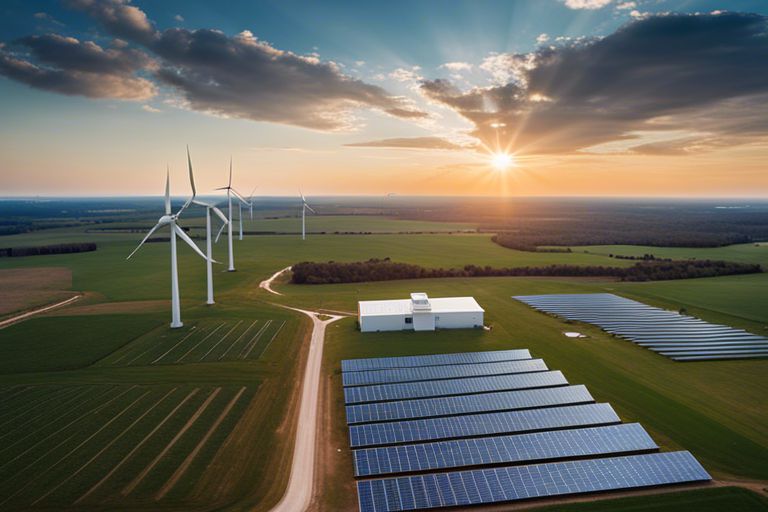Stillwater stands at a pivotal crossroads in its journey towards a more sustainable future. With the increasing threats of climate change and environmental degradation, the need for innovative solutions in energy generation has never been more urgent. By harnessing its abundant natural resources and adopting sustainable electricity practices, Stillwater has the potential to not only reduce its carbon footprint but also emerge as a model for other communities to follow. Let’s explore the possibilities and implications of Stillwater’s shift towards a greener, more sustainable energy landscape.
Key Takeaways:
- Potential for Leadership: Stillwater has the opportunity to become a frontrunner in sustainable electricity practices.
- Local Resources: The city can leverage its natural resources like wind and solar power for sustainable energy generation.
- Community Engagement: Involving the community in sustainable initiatives can help drive progress and support for green practices.
- Economic Benefits: Embracing sustainability can attract green investments, create local jobs, and reduce long-term energy costs.
- Environmental Impact: By transitioning to sustainable electricity practices, Stillwater can significantly reduce its carbon footprint and contribute to environmental preservation.

Exploring Stillwater’s Energy Landscape
Current Electricity Mix and Infrastructure
If Stillwater wants to become a leader in sustainable electricity practices, a thorough examination of its current electricity mix and infrastructure is crucial. An assessment of the sources of electricity generation and the state of the existing infrastructure lays the foundation for any future sustainable initiatives.
Historical Energy Usage Patterns
The historical energy usage patterns in Stillwater provide valuable insights into the city’s past reliance on conventional energy sources and its potential for transitioning to more sustainable practices. The analysis of past trends can identify areas where improvements can be made and highlight opportunities for enhancing energy efficiency and reducing environmental impact.
Usage of fossil fuels and non-renewable resources has been a dominant feature in Stillwater’s energy consumption history. This reliance poses significant environmental and health risks, including air and water pollution, as well as contributing to climate change. Moving towards more sustainable energy sources such as wind, solar, and hydroelectric power is crucial for mitigating these risks and securing a cleaner and healthier future for Stillwater.

Sustainable Electricity Practices
Defining Sustainable Electricity
Clearly, the concept of sustainable electricity revolves around the generation of power in a manner that meets the present needs without compromising the ability of future generations to meet their own needs. It encompasses practices that minimize environmental impact, promote renewable energy sources, and prioritize energy efficiency.
Best Practices from Around the Globe
Sustainable electricity practices vary around the world, with some standout examples that could inspire Stillwater’s journey towards sustainability. The use of solar power in Germany, hydropower in Norway, wind farms in Denmark, and geothermal energy in Iceland are all exemplary models of sustainable electricity practices that have significantly reduced carbon emissions and reliance on fossil fuels.
Globe: These countries have successfully integrated renewable energy sources into their electricity grids, showcasing the feasibility and benefits of transitioning towards a more sustainable energy future. By diversifying their energy sources and investing in innovative technologies, they have not only reduced their carbon footprint but also ensured energy security and resilience against climate change impacts.
Strategies for Stillwater’s Transformation
Policy and Regulatory Opportunities
Despite the challenges that lie ahead, there are numerous policy and regulatory opportunities that can pave the way for Stillwater’s transformation towards sustainable electricity practices. Forging partnerships with state and local governments to incentivize renewable energy investments, implementing carbon pricing mechanisms, and setting ambitious clean energy targets are crucial steps in this journey.
Community Engagement and Education
For Stillwater to truly become a leader in sustainable electricity practices, community engagement and education are paramount. By fostering a sense of ownership and responsibility among residents, businesses, and institutions, the city can garner support for sustainable initiatives and drive meaningful change. Educational programs, workshops, and outreach campaigns can empower individuals to make informed choices that contribute to a greener future.
Transformation: Community engagement and education are the backbone of sustainability efforts. By involving the community in decision-making processes and providing them with the necessary knowledge and tools, Stillwater can ensure long-term success in its quest for sustainable electricity practices. Building trust, fostering collaboration, and instilling a sense of environmental stewardship will be key to achieving a truly sustainable future.
Economic and Environmental Impacts
Cost-Benefit Analysis of Sustainable Electricity
Unlike traditional forms of electricity generation that come with significant upfront costs and unpredictable long-term expenses, sustainable electricity practices offer a more stable and cost-effective solution. An in-depth cost-benefit analysis of transitioning to sustainable electricity in Stillwater would likely reveal undeniable financial advantages in the long run.
Projected Environmental Benefits for Stillwater
Benefits from implementing sustainable electricity practices in Stillwater are projected to be substantial. Reduced carbon emissions, improved air quality, and conservation of natural resources are just a few of the positive outcomes that could be expected. The shift towards sustainability would not only benefit the environment but also boost the overall quality of life for residents in Stillwater.
Understanding the broader environmental impact of sustainable electricity practices is crucial. Lowering greenhouse gas emissions, decreasing dependence on fossil fuels, and promoting a cleaner, healthier environment are crucial factors to consider. By embracing sustainable electricity, Stillwater can lead the way in creating a more sustainable and eco-friendly community for future generations.
Conclusion
With these considerations in mind, it is evident that Stillwater has the potential to become a leader in sustainable electricity practices. By leveraging its vast wind energy resources, investing in solar power initiatives, and adopting energy-efficient technologies, Stillwater can pave the way towards a more environmentally-friendly future. With proper planning and commitment from stakeholders, the city can set a powerful example for other communities to follow in their pursuit of sustainable electricity practices.
FAQ
Q: What is sustainable electricity?
A: Sustainable electricity is generated from renewable sources such as wind, solar, hydro, and geothermal power, which have minimal impact on the environment and can be continuously replenished.
Q: Why is sustainable electricity important?
A: Sustainable electricity helps reduce dependence on finite fossil fuels, lowers greenhouse gas emissions, and contributes to mitigating climate change.
Q: Can Stillwater become a leader in sustainable electricity practices?
A: Yes, Stillwater can become a leader in sustainable electricity practices by investing in renewable energy infrastructure, implementing energy-efficient technologies, and promoting conservation efforts.
Q: What steps can Stillwater take to promote sustainable electricity practices?
A: Stillwater can establish renewable energy goals, offer incentives for renewable energy adoption, educate the community on sustainable practices, and collaborate with other stakeholders to support sustainable electricity initiatives.
Q: How can residents contribute to sustainable electricity efforts in Stillwater?
A: Residents can support sustainable electricity efforts by reducing energy consumption, switching to renewable energy sources, participating in community programs, and advocating for sustainable policies.
Q: What are the benefits of Stillwater becoming a leader in sustainable electricity practices?
A: The benefits include environmental preservation, economic growth through clean energy investment, improved public health from reduced air pollution, and enhanced resilience to climate change impacts.
Q: What are some examples of cities that have successfully implemented sustainable electricity practices?
A: Examples include Copenhagen, Denmark, which aims to be carbon-neutral by 2025 through wind power and district heating; and Reykjavik, Iceland, which achieves nearly 100% renewable electricity through geothermal and hydropower sources.




